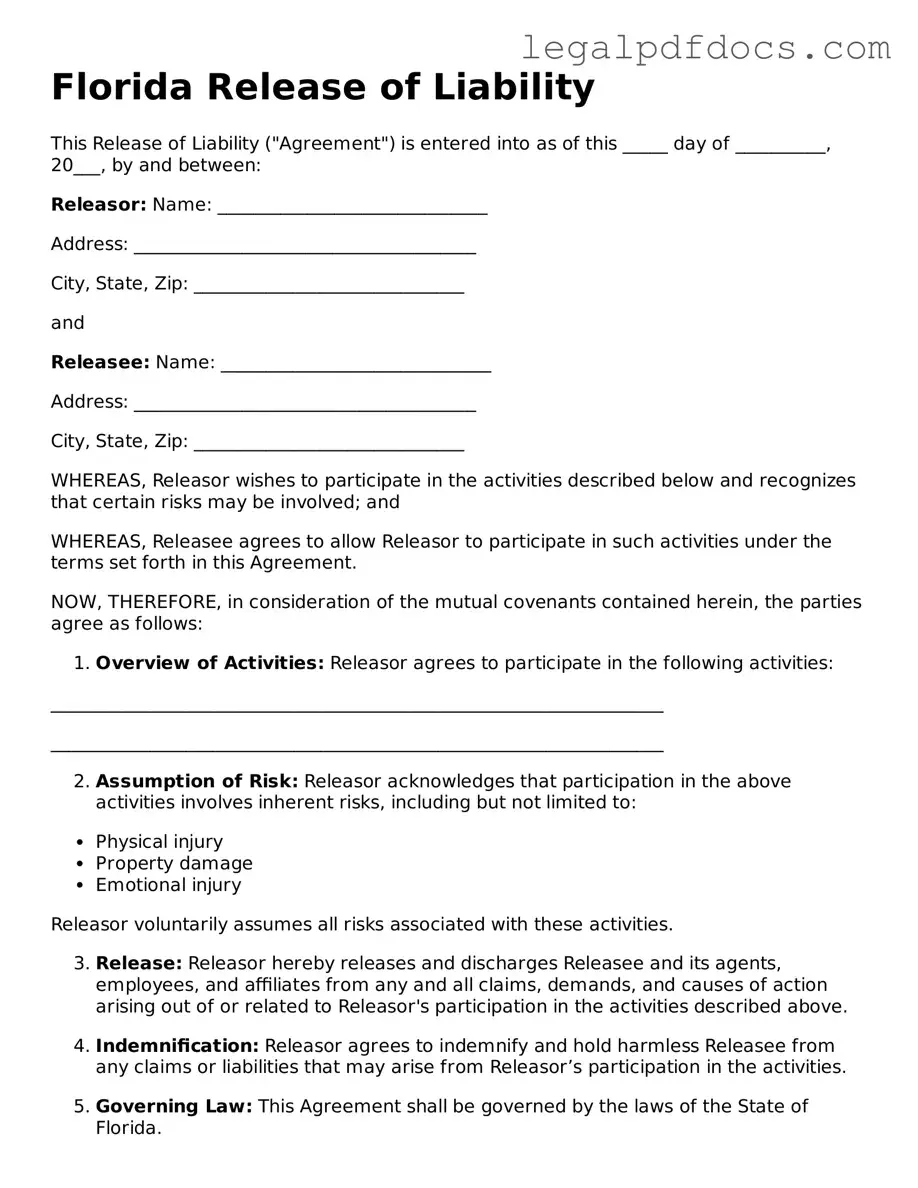The Florida Release of Liability form is a crucial document designed to protect individuals and organizations from legal claims arising from injuries or damages that may occur during specific activities or events. This form serves as a written agreement between the participant and the entity organizing the activity, outlining the inherent risks involved and the participant's acceptance of those risks. By signing this form, individuals acknowledge that they understand the potential dangers associated with the activity and agree not to hold the organizers responsible for any injuries or losses that may occur. It is commonly used in various settings, including recreational sports, events, and even educational programs. The form typically includes sections for personal information, a detailed description of the activity, and a clear statement of the participant's consent. Additionally, it may require a signature from a parent or guardian if the participant is a minor, ensuring that all parties are aware of the responsibilities involved. Understanding the importance and implications of the Florida Release of Liability form can help participants make informed decisions about their involvement in activities while providing peace of mind to organizers.
